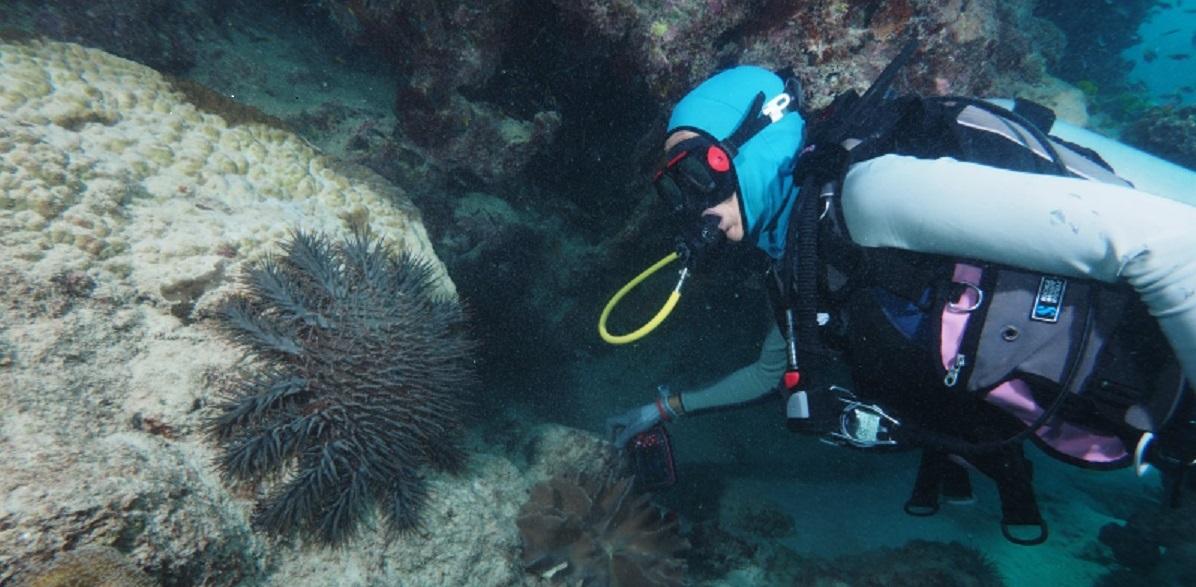Fish poo could hold the answer to tackling large numbers of crown-of-thorns starfish which are eating the Great Barrier Reef.
Outbreaks of crown-of-thorns starfish are a major threat to the health of the Great Barrier Reef, with divers recently culling more than 47,000 at the remote Swains reefs.
But researchers from the Australian Institute of Marine Science have come up with a unique way of identifying which fish like to eat the starfish.
AIMS’ marine ecologist Dr Frederieke Kroon is leading a ground breaking research project which is testing hundreds of fish poo samples.
We want to see if there are small fish on the reef, that eat some of the millions of tiny eggs and larvae of the crown-of-thorns starfish,” Dr Kroon said.
“We collected small fish from these reefs and gave them an overnight cruise onboard the AIMS research vessel, where we collected their poo before releasing them back onto the reef.”
“We take the samples back to the lab where our researchers apply a specific DNA probe designed to reveal the presence of crown-of-thorns starfish DNA in the fish poo.”
Dr Kroon said the DNA probe developed by AIMS scientists was much kinder to the fish than previous procedures.
“Previously we would have to collect the fish and open them up to have a look at the contents of the gut to see if any crown-of-thorns starfish remains were in there,” she said.
"With the DNA probe we have now, we don't have to be invasive and we don't have to kill the fish, we collect their poo and just let them go back on to the reef.”
Dr Kroon said results from a pilot study indicated large puffer fish and some Emperor species may be predators of the starfish.
Fish species which are identified as predators of the starfish could receive greater protections.
"Fish species which are found to eat crown-of-thorns starfish, could be well protected so we can have good numbers of those species in areas where outbreaks first start," she said.
“It could give us another tool to reduce the outbreaks.”
Researchers on the project, which is supported by the Australian Government’s National Environmental Science Programme (NESP), will return to the Great Barrier Reef in July to get samples from larger fish species.



